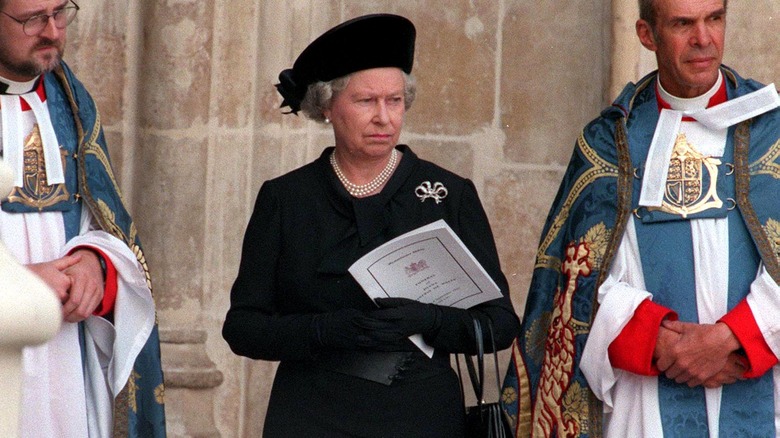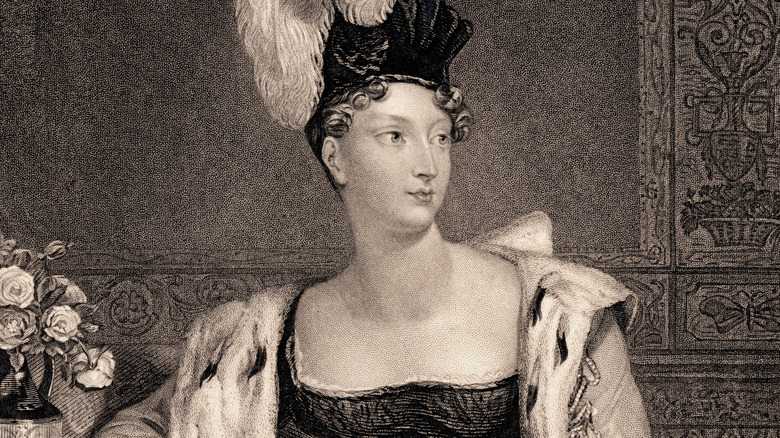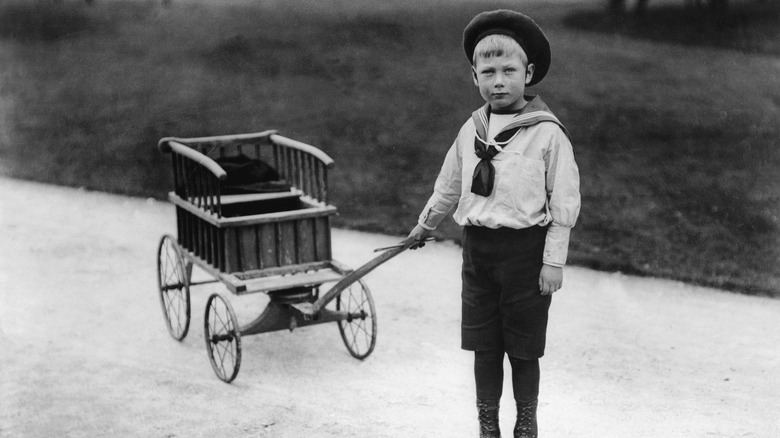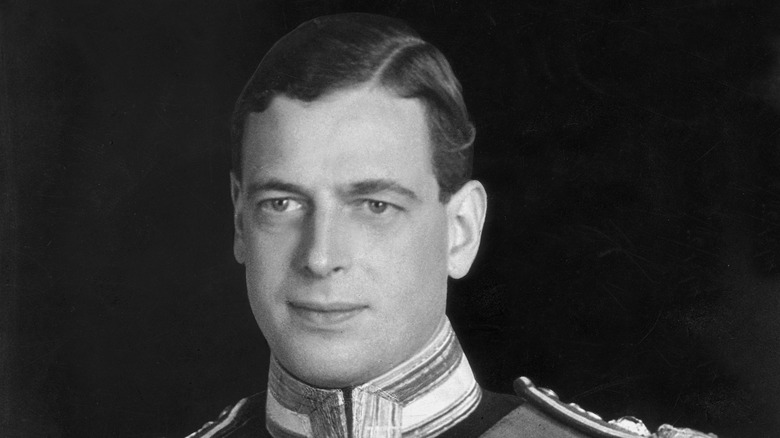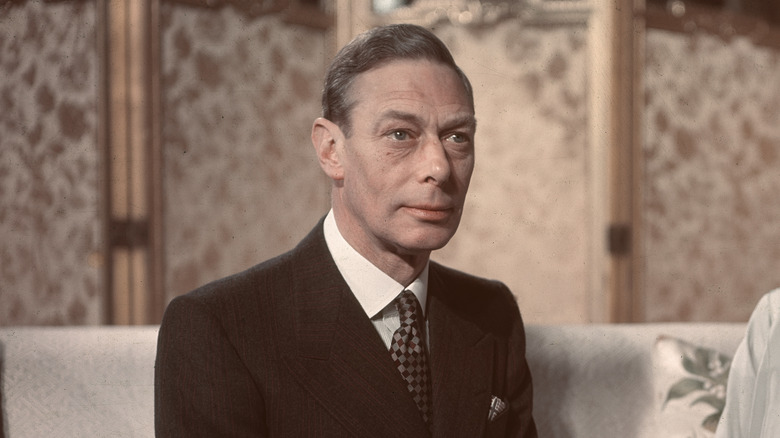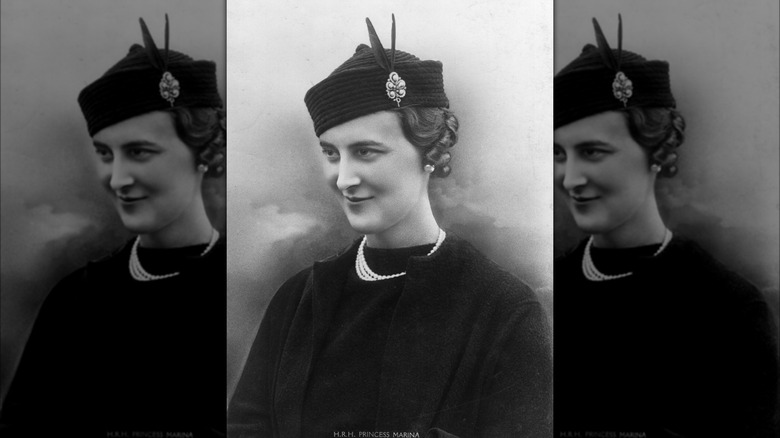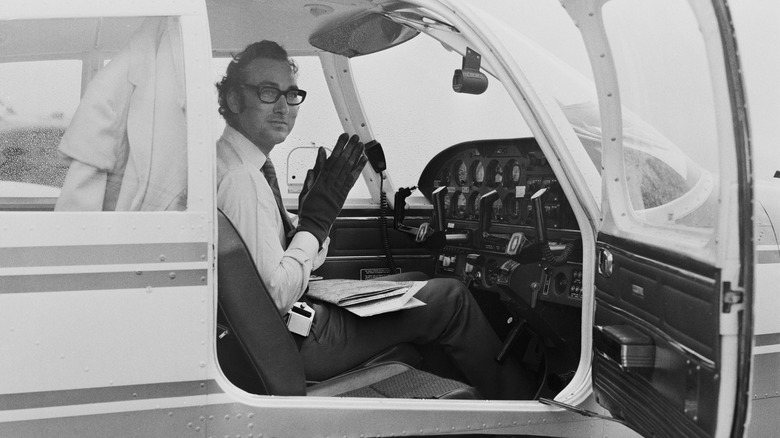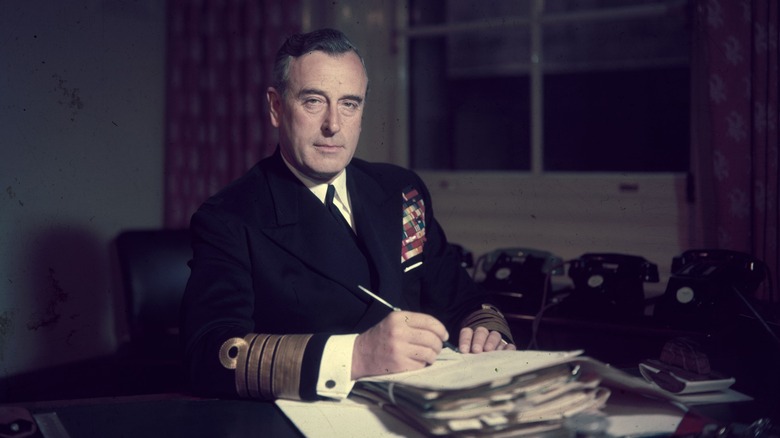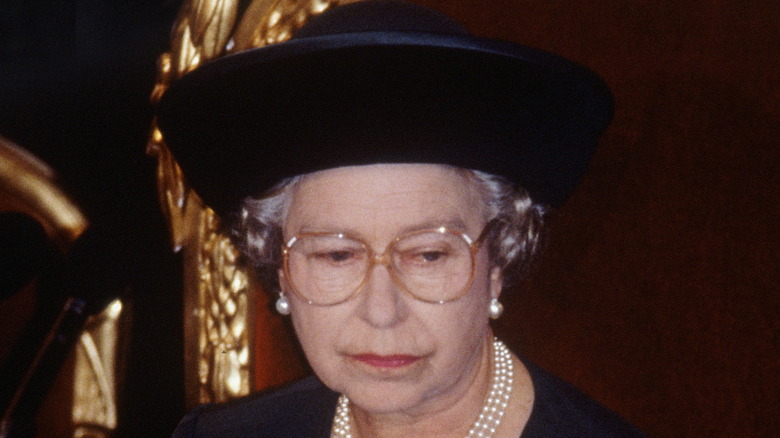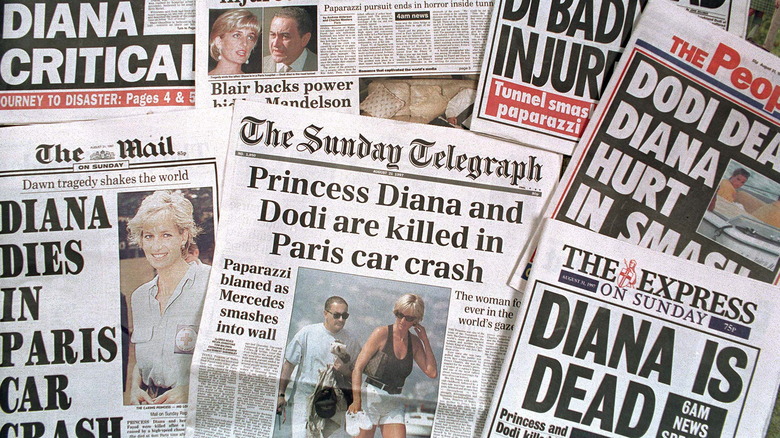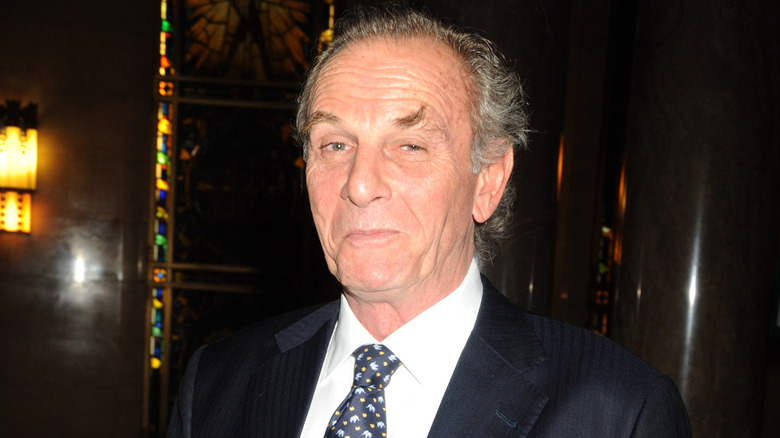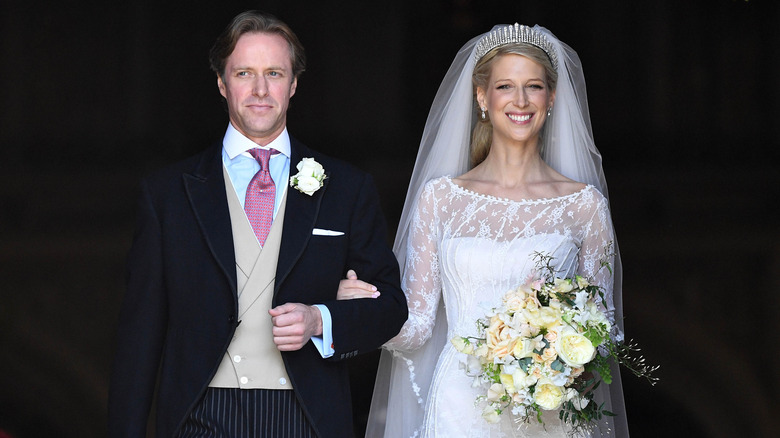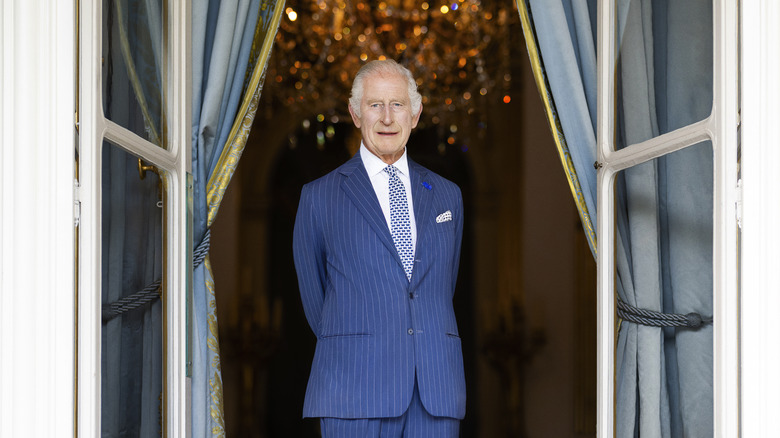12 Tragedies That Completely Shook The British Royal Family
The following article contains references to suicide.
Most monarchies around the world have long since gone the way of buttonhooks and horse-drawn buggies, yet Britain's royal family continues to endure. Not only is the British royal family still around, but they continued to capture the attention of worldwide media. Practically their every move is chronicled and documented to the most infinitesimal degree. That's true of celebratory moments, such as weddings and births, and equally true in times of tragedy. Sure, they live lives of extreme wealth and privilege that most people will never experience; however, they're not immune to illness, turmoil, and death. While the latter has often come for royalty as the result of old age, there have been those occasions when the royals have suffered losses that were as unexpected as they were heartbreaking.
These royal tragedies did not occur in a vacuum and were often met with huge displays of public mourning. Meanwhile, there have also been occasions when the unanticipated death of a royal has changed the course of history.
A future queen died after royal doctors botched her baby's birth
When pregnant Princess Charlotte of Wales went into labor in 1817, what should have been a joyous occasion turned tragic for the British royal family. After two days of long and arduous labor, she delivered a son who was stillborn. Due to complications from the difficult birth, Charlotte herself died five hours later.
Reports and correspondence from the attending physicians — Dr. Matthew Baillie, Sir Richard Croft, and Dr. John Sims — indicated a state of chaos and confusion among the doctors during the botched birth. The public came to place the blame on Croft, who had decided not to use forceps — then seen as unduly risky — to extract the baby earlier and potentially save the lives of both mother and child. Croft was overcome with guilt. Blaming himself for their deaths, he died by suicide just a few months later.
Meanwhile, the passing of Charlotte and her baby created a royal conundrum for the monarchy, given that the princess was the king's only child, thus eliminating two generations of heirs to the throne and altering the path of succession. As a result, the king's unmarried brothers were encouraged to quickly find wives and start producing some royal babies — one of whom was the future Queen Victoria.
Prince John died at 13 after being hidden away
In 19015, Prince John was born. He was the youngest child of King George V, who was Queen Victoria's grandson and King Charles III's great-grandfather. By the age of 4, John began suffering epileptic seizures and was deemed to have a disability, which would've perhaps been classified as autism today. As his seizures became more frequent, the child was sent away to the royals' Sandringham estate under the care of a governess, separate from the rest of the family save for special occasions such as Christmas dinner. Three years after his exile to Sandringham, Prince John died in his sleep. He was just 13.
His older brother — future monarch King Edward VIII — wrote about John's death in a letter that was illustrative of the royal family's cruel indifference. "He's been practically shut up for the last two years anyhow no one has even seen him except the family and then only once or twice a year and his death is the greatest relief imaginable or what we've always silently prayed for," he wrote, as reported by The Telegraph. "No one would be more cut up if any of [the] other three brothers were to die than I should be, but this poor boy had become more of an animal than anything else and was only a brother in the flesh and nothing else."
Prince George, Duke of Kent, died in a mysterious plane crash
Now known as "the forgotten prince," Prince George (aka the Duke of Kent) was the fourth son of King George V. His oldest brother, Edward, would go on to become king before abdicating, placing their sibling on the throne as King George VI.
Groomed for a life in the Royal Navy, the prince eventually sought employment with the government, working as a factory inspector for Britain's Foreign Office and then the Home Office — earning the distinction of becoming the first British royal in history to be employed as a civil servant. He married Princess Marina of Greece and Denmark, and the Duke and Duchess of Kent became the toast of British high society in the years leading up to the Second World War.
In 1942, George boarded an RAF aircraft, reportedly to visit troops in Iceland in order to bolster morale. He never made it. The plane crashed into a hill in Scotland, leaving no survivors. Conspiracy theories began to emerge when the flight plan mysteriously disappeared, as did all records from a secret court of inquiry investigating the crash. One such unsubstantiated theory posited that the duke wasn't actually planning to meet troops in Iceland but was instead heading to Sweden on a covert mission to undertake peace talks with the Germans. A related theory held that he was assassinated on the orders of Prime Minister Winston Churchill, who believed the royal was a Nazi sympathizer.
King George VI's premature death likely resulted from his smoking habit
The British royalty's line of succession was altered when King Edward VIII abdicated the throne and his younger brother, King George VI, became monarch. The king was a lifelong heavy smoker, reportedly inhaling two-plus packs a day, resulting in some serious health problems later in life. In 1948, a pain in his leg was diagnosed as arteriosclerosis. While doctors feared his entire leg might have to be amputated, he successfully underwent surgery the following year.
Then, in 1951, doctors performed an operation to remove one of his lungs. "The decision to operate was taken on Friday after doctors noticed 'structural changes' in the King's lung, which were giving cause for concern," noted a BBC news report at the time. While the British public — and, in fact, the king himself — were told that the surgery went well and he was recovering, the truth was that they'd removed a malignant tumor and that the cancer had spread. Five months after that surgery, in February 1952, he died in his sleep at the age of 56. At the time, the cause of death was said to be cardiac arrest caused by coronary thrombosis; the word "cancer" was never once used — one of many health issues the royal family tried to hide.
Princess Marina was diagnosed with a fatal brain tumor
After the death of her husband in the aforementioned mysterious 1942 plane crash, the widowed Princess Marina, Duchess of Kent, remained a particularly popular member of the royal family among the British public. An aficionado of fashion and a frequent visitor to the couture houses of Paris, she became a fashion icon. In fact, her distinctive pillbox hats became all the rage, with cheap copies produced and sold in British shops as "Marina hats" — a phenomenon immortalized by British rock group The Kinks in the 1969 song "She's Bought a Hat Like Princess Marina."
In 1968, Princess Marina entered London's National Hospital for Nervous Diseases, where she was diagnosed with an inoperable brain tumor. Five weeks later, she died in her sleep at the age of 61.
Marina's funeral was held at St. George's Chapel in Windsor, with royals in attendance, including Queen Elizabeth II, Prince Philip Princess Margaret, and the Queen Mother. Edward VIII, the queen's uncle and the brother-in-law of the deceased duchess, also attended — marking his final public appearance before his own death.
Prince William of Gloucester perished in a plane crash at 30
Prince William of Gloucester was the grandson of King George V, making him Queen Elizabeth II's cousin and fourth in line to the throne when he was born. Unlike many of his more idle royal relatives, William took a job with Britain's Commonwealth Office, stationed in Lagos and then Tokyo.
William was also an avid pilot who owned several planes, served as the president of the British Light Aviation Centre, and routinely participated in British aerial competitions. While competing for the Goodyear International Air Trophy in 1972, his plane crashed during takeoff. He and his co-pilot were killed in the crash, having been burned beyond recognition to the point that dental records were required to identify the bodies. "It ended up just a mangled burned-out wreck," a witness recalled, as reported by The New York Times.
Prince William was just 30 years old when he died. At the time of his death, he was ninth in line to the throne.
Lord Mountbatten was assassinated by IRA terrorists
Uncle of Prince Philip, Louis Francis Albert Victor Nicholas Mountbatten — more commonly known as Lord Mountbatten — had a distinguished military career, appointed as Britain's final viceroy of India until the nation's independence. In 1979, Lord Mountbatten decided to go fishing in Northern Ireland, where he had a summer house. Shortly after his boat left the dock, it was destroyed in a massive explosion. He was immediately killed in the blast, as were his grandson and another young passenger. Four others were injured, with three surviving. As an eyewitness to the explosion told The New York Times, "The boat was there one minute and the next minute it was like a lot of matchsticks floating on the water."
The provisional wing of the Irish Republican Army issued a statement taking credit. "In claiming responsibility for the execution of Lord Mountbatten the I.R.A. state that the bombing was a discriminate act to bring to the attention of the English people the continuing occupation of our country," read the statement, as reported by The New York Times.
The royal family was understandably shocked, saddened, and angered. Years later, then-Prince Charles reflected on his uncle's assassination. "At the time I remember feeling intense anger, even hatred of those who could even contemplate doing such a thing," he said in 2011 (via Irish Independent).
Queen Elizabeth's grim 'annus horribilis'
The year 1992 was a particularly awful one for Britain's royal family, with Queen Elizabeth II memorably quoting it as her "annus horribilis." A swipe through the calendar sums up what made '92 particularly terrible for the queen and her family.
In February, there was that now-iconic photo of Princess Diana looking sad and lonely in the shadow of the Taj Mahal during a trip to India with then-husband Prince Charles. Then, in March, Prince Andrew announced that he and wife Sarah Ferguson were separating, followed by the April announcement that Princess Anne's divorce had been granted. June brought the publication of Andrew Morton's sensational book, "Diana: Her True Story," which served up a cavalcade of salacious secrets the queen would have preferred to stay that way, while August delivered a scandalous and awkward photo of the newly single Duchess of York having her toe suckled by a financial adviser from Texas. Days later came the published transcript of a secretly recorded and headline-making conversation with Diana and longtime friend James Gilbey that came to be dubbed "Squidgygate."
In mid-November, Windsor Castle was ravaged by a massive fire. "Within three hours 225 firemen from seven counties were battling the flames," noted the Royal Collection Trust. In late November, the queen delivered her famous speech about the awful year: "1992 is not a year on which I shall look back with undiluted pleasure." As bad as it was then, the annus horribilis continued with the December announcement of then-Prince Charles and Diana's separation.
Princess Diana's tragic death while fleeing paparazzi
Countless reports and numerous books have been written about the tragic death of Princess Diana, killed in a 1997 car crash in Paris while her driver attempted to evade hordes of pursuing paparazzi.
While millions throughout the world mourned the loss of "the people's princess," the royal family was hit with backlash when Buckingham Palace didn't issue an immediate statement expressing bereavement. When Queen Elizabeth II finally addressed the tragedy in a televised speech, it was five days after Diana's death.
While "The Crown" offered a fictionalized account of what took the queen so long to respond, royal expert Marlene Koenig believed that the queen felt that since Diana had divorced Charles and thus was no longer a member of the royal family, the Spencers, Diana's family, should be handling matters. That, however, wasn't how the public viewed it. "To Charles' credit, he put his foot down. He went to Paris to bring her home and he was really the one pushed for the funeral — and it wasn't a state funeral, it was an official funeral," Koenig told Express. "Of course, the Queen didn't want that but eventually I think she came around to it because you also had the Prime Minister [Tony Blair] who played this all up and, 'Oh, the Queen was cruel' and all that."
Queen Camilla's brother died in a freak accident
Mark Shand was the older brother of Queen Camilla, renowned for his work in elephant conservation. In 2014, he was visiting New York City to participate in a charity fundraising event when he stepped outside a Manhattan bar to smoke a cigarette. As he re-entered through a revolving door, he fell backward and hit the back of his head on the sidewalk. First responders arrived on the scene and Shand was transported to a hospital, where he was sadly pronounced dead.
"The Duchess, the Prince of Wales and all her family members are utterly devastated by this sudden and tragic loss," read a statement from Clarence House, as reported by ABC News. "Mark Shand was a man of extraordinary vitality, a tireless campaigner and conservationist whose incredible work through the Elephant Family and beyond remained his focus right up until his death."
After his death, writer Bob Colacello paid tribute to Shand in Vanity Fair, writing, "People routinely compared him to Tarzan, Indiana Jones and [British explorer] Sir Richard Burton. ... The late Nigel Dempster, London's top society columnist for decades, dubbed him 'He-Man Shand.'"
Lady Gabriella Windsor's husband died tragically just four years after their wedding
In May 2019, Lady Gabriella Windsor — daughter of Queen Elizabeth II's cousin, Prince Michael of Kent — tied the knot with Thomas Kingston in a lavish ceremony attended by an array of royals, including the queen herself.
Sadly, Kingston died in December 2023 at the age of 45. Initially, Kingston was thought to be missing. Searching the grounds of the family estate, his father forcibly entered a locked building on the property and discovered a tragic scene. "He found Mr. Kingston deceased with a catastrophic head injury," coroner Katy Skerrett wrote in her inquest, as reported by the Daily Mail. "A gun was present at the scene. Emergency services were called. Police are satisfied the death is not suspicious."
The outcome was understandably disturbing to the royal family, with Buckingham Palace issuing an official statement. "Tom was an exceptional man who lit up the lives of all who knew him," read the statement (via People). "His death has come as a great shock to the whole family and we ask you to respect our privacy as we mourn his passing."
If you or anyone you know is having suicidal thoughts, please call the National Suicide Prevention Lifeline by dialing 988 or by calling 1-800-273-TALK (8255).
King Charles' cancer diagnosis rocked the royal family
It's no secret that King Charles III's ascension to the British throne had been a long time coming. Upon the death of Queen Elizabeth II at the age of 96 in September 2022, Charles finally became monarch. Aged 73 at the time of his coronation, Charles had been king for just over a year when Buckingham Palace announced in February 2024 that he'd received a cancer diagnosis. "During the king's recent hospital procedure for benign prostate enlargement, a separate issue of concern was noted. Subsequent diagnostic tests have identified a form of cancer," read a statement from Buckingham Palace.
According to the statement, Charles started unspecified treatment and would be stepping back from public royal duties for a time. "He remains wholly positive about his treatment and looks forward to returning to full public duty as soon as possible," the statement continued, adding that the king had decided to go public with his diagnosis to avoid rumors.
As of this writing, further news about Charles' prognosis has been scarce; however, it was apparently serious enough to thaw the frigid relationship between the king and his estranged son, Prince Harry. "I jumped on a plane and went to go see him as soon as I could. ... The fact that I was able to get on a plane and go see and spend anytime with him, I'm grateful for that," Harry said in an interview with "Good Morning America."
